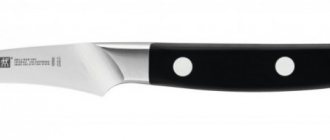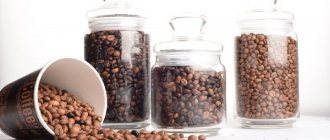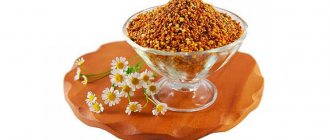Share
Tweet
+1
Pin
Garlic and onions can be called mystery vegetables; eating them fresh causes an unpleasant odor from the mouth, and they cannot be eaten in large quantities. However, they are constantly added to various dishes to make them more delicious. In addition, these vegetables contain a whole storehouse of vitamins; they have properties that can defeat any virus in the body.
How to store onions?
- First, the onions need to be selected and dried. At home, onions are stored in baskets, boxes, drawers, nets and even old nylon stockings. It is better to choose small boxes and crates (no more than 30 cm in height) and always have holes for ventilation. If you are going to put the onions in a bag or net, also add a layer of up to 30 cm.
- Do not store onions in plastic bags under any circumstances; they do not allow air and moisture to pass through, so the onions will quickly begin to rot.
- To preserve onions for as long as possible, you need to periodically inspect them and remove spoiled bulbs.
- If you find that the onion is damp, dry it again and put it in a new container.
How to store garlic at home?
Garlic grown in our area is divided into two groups of varieties - spring and winter. The former are more difficult to grow, but they can be stored for up to 1–1.5 years. Spring garlic should be stored in the same way as onions. How to store winter garlic at home, since its shelf life is shorter than that of spring garlic? But even so, winter crops can be preserved until the New Year without any problems. However, there are ways to make the shelf life of garlic as long as possible. Whatever method you use, keep in mind that the garlic should be in a well-ventilated and dry place.
Basic ways to store garlic:
- For fresh garlic, you need to cut off the stems and roots, scorch the cut points a little over the fire and dry the heads. The roots and stems can be cut with a regular knife or scissors. The stems are not completely removed, but leaving 1.5–3 cm from the head. Garlic processed in this way can be stored well if you put it in a linen bag, sprinkle it with onion peels and hang it in a dry place. Another suitable way to store prepared garlic is spread out on newspaper.
- If you like garlic “braids”, which can make the kitchen interior more cozy and “rustic”, the stems can be braided and hung in the form of “garlands” instead of being cut off. By the way, you can also store onions in the same bundles. In addition to decorating the interior, garlic and onion garlands will be an excellent means of disinfecting the air in the apartment.
These storage methods are more complex, but will allow the garlic to last until spring.
- The garlic head must be divided into cloves and each peeled. Place the slices in jars with sunflower oil. The oil, by the way, does not spoil and can be used.
- Without cleaning, place the heads in glass jars, sprinkling with flour, and pour a 2 cm layer on top. Close the jars, but periodically open them during storage so that the flour does not become damp.
- Another option is to use table salt instead of flour. Then a layer of salt is poured onto the bottom of the jar, and then garlic. Each garlic layer is sprinkled with salt. In this case, the storage container does not need to be closed.
Now you know how to store onions and garlic at home. Using these recommendations, you will never find that such necessary and healthy products suddenly go bad, and you are left without an important ingredient of your favorite dish.
Published by: admin on November 03, 2022, section: Miscellaneous, views 17744
Many people grow healthy natural vegetables and plants on their plots, including onions and garlic. And what housewife doesn’t keep these products in her arsenal? But not everyone knows how to store them correctly and are very surprised when they discover that the onions have rotted and the garlic has dried out. At the same time, storing them is not so difficult.
Helpful information
Tips for storing garlic and onions at home:
To avoid mold and rot, vegetables must be thoroughly dried before storing.- Only late-ripening onion varieties are suitable for long-term storage.
- You can spread the onions and garlic in the apartment on the floor, after covering it with newspapers. To keep them out of the way and take up useful space, they are put under the bed.
- The shelf life of vegetables depends on their variety. Spicy onions last the longest. Like garlic, it can remain fresh until April - May.
- Treating garlic with linseed oil helps slow down the drying process of garlic. You need to boil it, add a few drops of iodine to it (10 drops per 500 ml) and rub it on each head. Then the vegetables are dried in the sun and only then stored.
The most dangerous disease for onions and garlic is neck rot; when it develops, the neck becomes covered with gray mold.
Sometimes vegetables spoil on the side or near the bottom. First of all, unripe and poorly dried heads are damaged.
Read about why onions rot during storage and how to prevent it. You will find the most useful information about storing onions here.
Methods for storing onions and garlic
Typically, onions are stored at room temperature in a heated room. For example, in an apartment, on a balcony or storage room. There are several well-known storage methods:
- Use baskets to store onions
The best option for a basket for storing onions would be a knitted basket. Before placing your harvest (a batch of onions, whether your own or purchased), check the baskets for dryness. The baskets should not be wet.
If you notice a sign of moisture, dry them in sunlight for a day or two. Using a basket, you can lay large volumes of onions; thanks to the basket, they do not spoil under the weight of other onions.
- Use for storing boxes or crates
For storage in boxes (cardboard), boxes with holes will need to be used. Without them, when the humidity is high, the bulbs will begin to rot. It is advisable not to store more bulbs in such containers.
Recommended quantity: no more than a bucket per box. At the bottom of the box you need to place a piece of paper or newspaper. It will absorb moisture, preventing your bulbs from rotting. With this method, you need to sort through the bulbs and remove rotten ones if you notice them.
When using a wooden storage box, make sure it is dry. Place a piece of cardboard under the bottom of the box to soften the hard surface. Under the weight of the top bulbs, the lower ones will be damaged and begin to rot.
Cardboard will avoid this problem. It's good if the box has holes, but if your bulbs are so small that they will fall through it, you can put plastic mesh around the edges.
This will allow fresh air to flow in and prevent the bulbs from slipping through narrow openings.
- Use grids for storage
Place the bow in a nylon net or purse. This method is one of the best; its application does not require much effort. All you need to do is put the bulbs inside.
The pressure in the mesh is distributed evenly and does not damage the bulbs under its own weight. Also, under the influence of vaga, the bulbs will not rot, since they are well ventilated.
When storing onions in nets, it is very convenient to place them in any place convenient for you, simply by hanging them on a nail or hook.
- Braiding onions
This storage method involves weaving braids from onions. When harvesting onions, do not cut off the greens. Let the onion dry. And then braid the greenery into braids.
As with the previous method, you can place the bulbs in any place convenient for you. They will be well ventilated and stored longer.
Garlic - storage features of vegetables
Before storing, it is better to select garlic by size. It is better to eat small heads of garlic immediately, as they dry out and spoil much faster. There are many ways to store the spicy vegetable. All of them are working and time-tested. Which one is better is up to you to decide!
In onion skins
Garlic is ideally stored in the peels of red and onions. Scorched, healthy and dried heads can lie in onion peels until mid-spring without spoilage or damage. For this storage method, you should prepare boxes or plastic boxes with ventilation. The drawers and boxes should have holes so that air can circulate and mold does not appear on the garlic heads. Place the garlic heads and onion peels in layers, sprinkling the new batch of vegetables with dried natural mulch. The boxes are filled to the very top of the structure. The last and first layer should always be onion peels. Next, you need to close the boxes and send the garlic heads for storage. From time to time you need to check the vegetable for the appearance of diseased heads of garlic.
In pigtails
After harvesting, dry garlic stalks are not cut, but braided into tight braids. For weaving, you may need a tourniquet or rope, since the stems of the plant are not as strong as those of onion bulbs. The finished braids are hung for storage in a dark and dry room, which is regularly ventilated. This way the garlic heads dry quickly and are stored well. If the garlic begins to dry out, you should move the braids to a colder space. It is preferable to store the vegetable at a temperature of one to four degrees Celsius. You can also decorate the interior of your dacha with similar braids in the autumn, as well as in the spring.
In paraffin
This type of storage helps preserve garlic heads for a long time due to the shell that paraffin creates. This material prevents the garlic heads from drying out and sprouting. To preserve the spicy vegetable, you should melt the paraffin and dip the heads into the prepared mixture - for a few seconds each. In this case, the vegetable can be held by the stem. Paraffin hardens quite quickly, so there is no need to hang them to dry. Next, the garlic should be placed in boxes with ventilation holes and stored in a dark pantry at room temperature.
In glass jars
Dried, ripened garlic can also be stored in glass jars. To do this, you need to put the heads of garlic in a jar and sprinkle the layers of the vegetable with salt or regular wheat flour. The bottom and top of the jar must be filled with bulk products. Containers of garlic can be stored in a kitchen cabinet or on a shelf.
In paper bags and fabric bags
This is how the winter variety of garlic is stored efficiently. Garlic heads in bags or bags can be stored in the refrigerator, as these materials allow air to pass through well. When stored in this way, the heads of garlic perfectly retain their appearance, aroma and taste and do not spoil. Every month you need to check the bulbs in the bags and remove spoiled garlic heads, if any appear. Next, the vegetable is sent for further storage.
In baskets and jars
For this type of storage, you need to scorch the roots of the garlic heads with a lighter and place the vegetables in jars or boxes with ventilation holes. Garlic should be thoroughly sprinkled with sawdust or salt. This garlic can also be stored in open baskets, old tights and stockings in a cool and dry place. But scorched garlic heads are not suitable for planting after storage. It is necessary to sort out the garlic from time to time and ensure that there are no damaged heads.
Garlic
Storing garlic follows approximately the same principles as onions. The main factor in preserving the plant in winter remains a warm room and ventilation.
Before storing garlic, check it for rotting or damage. If the garlic looks healthy, it can be used for storage.
- In pigtails.
- In linen bags.
- In a hanging net.
Garlic in braids
Everything is simple here. This method, as with onions, involves braiding garlic on their stems. Then we hang the braid in any convenient place. There is no need to do anything else; in such conditions, the garlic will hang quietly until the next season.
Garlic in a bag
Store garlic in bags. This is a convenient storage method. The garlic is placed in a small bag. In it, the garlic does not press on each other with such force that it damages neighboring fruits, and the bag itself absorbs excess moisture and allows air to pass through.
Garlic in a net
Just like onions, garlic can be hung in any convenient heated room on a nail or string, where it will safely survive the entire winter.
As we can see, there are a lot of ways to store onions and garlic. Try each of the methods listed above and find a more convenient option for storing these plants.
For storage in boxes (cardboard), boxes with holes will need to be used. Without them, when the humidity is high, the bulbs will begin to rot. It is advisable not to store more bulbs in such containers.
Optimal humidity and temperature conditions for storing bulbous vegetables
To keep onion and garlic heads as long as possible, you should maintain an air temperature of up to four degrees. In such conditions, you can store spicy vegetables in any area of the apartment, private house or outbuildings. You can also store onions and garlic in the refrigerator.
Onions also tolerate temperatures of twenty degrees well if the onions are placed in boxes with perforations. However, with this method you should maintain a humidity of sixty percent, but no more. In this case, the boxes with onions are placed on the floor - in the coldest point of the room.
Avoid dampness when storing bulbous plants, as fungi and mold microorganisms quickly develop in such conditions. Dry air causes the bulbs to wilt, but this is not as critical as rotting. The room for storing onions must be regularly ventilated.
Now you know everything about storing many types of onions and garlic. All methods are time-tested and give excellent results when all necessary conditions are met. How do you store onions and garlic? Share your experience in the comments!
You may also find the following materials useful:
- Zucchini like milk mushrooms for the winter without sterilization
- Pumpkin pastille in the dryer recipe. Jam, pastille, preserves, juice, candied pumpkin
- 15 incredibly tasty recipes for drinks made from birch sap for the winter: simple and very tasty
- Garden spice – marjoram. Benefits, cultivation, preparation
- Money tree - Crassula - is a storehouse of health
How to store onions in baskets
For this purpose, preference should be given to a real wicker basket, but if the harvest turns out to be too large, then you can use several similar specimens. It is necessary that the baskets are dry; to do this, you should expose them to the sun for a couple of days for proper drying. If the basket is used for the first time, you can be sure that the vegetables will be safe. When reusing, it is recommended to treat the container with 2% Bordeaux mixture, and each product will need to spend about half a liter.
Next, you need to dry the basket and only then put the onions into storage. The product can be filled to the top with onions, since the vegetable will not receive any damage due to its own gravity, therefore, no problems will arise. Why are these types of baskets a great option? You can periodically take out the product and inspect the condition of the bulbs through the cracks; if any vegetable begins to rot, it must be removed. In addition, you should also remove those bulbs that were located next to the spoiled vegetable.
How to store onions in an apartment
Almost no dish is complete without onions: salads, cutlets, soups... Growing onions in your garden is only half the battle, it still needs to be properly preserved, and for city residents, who do not have cellars, this is doubly difficult.
- Preparation for storage
It is advisable to harvest onions no later than mid-August in dry weather. In order for onions to be stored well and for a long time, they must be fully ripe. An unripe onion does not yet have enough scales, which will subsequently protect the bulb from drying out.
Depositphotos
On the other hand, onions that have “overstayed” in the garden can begin to grow again and even take new roots. Such fruits do not last long. When harvesting, it is not recommended to pull out the bulbs, throw them, or knock them on the ground. This may result in a shorter shelf life.
Storing onions is much more effective after thorough drying. To do this, the bulbs along with the leaves need to be spread out in a thin layer in the fresh air. It is convenient to use armored nets for this: there is no direct contact with the ground and ventilation is good.
After the onion has dried, it must be trimmed. It is more convenient to use scissors for this. Trim the dry leaves so that a 4–6 cm long neck and roots remain, without touching the bottom of the bulb. If the onion will be stored in a braid, then the length of the neck should be longer, up to 15 cm.
Do you always comply with the storage conditions for food and medicine? Yes, we always try. 62.56%
No, nothing like that will happen
22.36%
Is it necessary? This is probably only important in restaurants and cafes. 15.08% Voted: 398
Inspect and feel each bulb. There should be no damage, no foci of disease, no sprouts on them. Select for storage only strong, healthy bulbs with thin and dry necks. Storage in tights
In wooden boxes, wicker baskets, and fabric bags you can create good ventilation, but it is difficult to protect the bulbs from contact with neighboring bulbs, one of which may turn out to be rotten and spoil up to 2 kg of the crop.
Depositphotos
One of the old and proven methods is to store onions in braids. Onions are stored in such bundles for a long time; they can serve as decoration for the kitchen, but they require hard work and a lot of patience.
But in the refrigerator, onions will remain fresh for only a few months. And under no circumstances wrap it in plastic. Onions do not like this material; high humidity and lack of ventilation will quickly lead to its rotting.
A simple and effective way to store onions is in old women's tights. At one time, satirists laughed enough at this habit of our grandmothers, but it nevertheless works and protects the onion from rotting.
Especially if you make knots between the bulbs. You put the onion in, tie a knot, then put in the next one. The resulting onion “leg” should be hung in a cool, dry place. If you need an onion, just cut off the bottom one without touching the rest.
Storing garlic at home
In our conditions, garlic is grown, which is divided into two types: winter and spring. The second option is more difficult to grow, but can be stored for up to one and a half years. In this case, the storage method is no different from the option with onions. With winter garlic, everything is a little more complicated, however, even it can be saved until the beginning of the new year. There are methods to extend the shelf life of vegetables. Regardless of the method chosen, keep in mind that the garlic should be in a place that is well ventilated and dry.
Basic storage options
Fresh garlic is freed from stems and roots, the cut area is lightly scorched over the fire, after which the heads must be dried. The roots and stems can be cut using a knife or scissors. In this case, the stems should not be completely removed; they are left at a distance of 3 cm from the head itself. After processing, the garlic should be placed in a bag, onion peels should be poured inside, and then the product should be hung in a place where moisture does not penetrate.
You can use another option, in which the vegetable is laid out on a newspaper. You can weave garlic stalks into braids and hang them in the kitchen area as garlands. This will make the room look more rustic. In addition to the aesthetic component, such braids will also play a disinfecting role. Consequently, the air will always be clean, without bacteria.
Fresh garlic is freed from stems and roots, the cut area is lightly scorched over the fire, after which the heads must be dried. The roots and stems can be cut using a knife or scissors. In this case, the stems should not be completely removed; they are left at a distance of 3 cm from the head itself. After processing, the garlic should be placed in a bag, onion peels should be poured inside, and then the product should be hung in a place where moisture does not penetrate.
What problems may arise during storage?
Often, when storing garlic, problems arise that can be prevented if you follow the rules, clearly evaluate the available options and choose the most suitable method for preserving the vegetable. The table presented will help systematize information, navigate possible problems and external signs of storage errors.
Table: how storage errors manifest themselves
| Problem | Why does it occur | Solutions |
| Drying out | Drying of garlic occurs due to improperly created conditions. The air in the room is too dry and warm, resulting in intense evaporation of moisture. As a result, the slices wrinkle, lose mass, and become brittle |
|
| Mold or rot | Storage at high humidity and temperature | Ensuring the necessary storage conditions described above |
| Storage in closed containers without sufficient air access |
| |
| The garlic was poorly dried or frozen | Compliance with the rules of preparation for storage, in particular, high-quality drying | |
| The vegetable is infected with fungal diseases |
| |
| Germination | Storage at high humidity and temperature |
Unfortunately, it will no longer be possible to completely stop the development of seedlings in the cloves; they will gain strength and draw out juices from the mother clove, so such heads should be sent for processing or immediately consumed as food |
| Yellowness on the cloves | Unsuitable storage conditions | Ensuring the necessary storage conditions described above |
| The vegetable is infected with fungal diseases |
|
If a poor-quality selection was carried out during storage, and heads infected with fungal or bacterial infections ended up in storage, then after a short time they will begin to deteriorate, rot and, most importantly, infect healthy garlic with pathogens
Therefore, it is important to periodically inspect crops sent for long-term storage and promptly remove and destroy infected bulbs. The presence of diseased heads is a signal that the seed may be infected, so effective and adequate measures should be taken to disinfect it
Signs of fungal and bacterial diseases that appear during storage of garlic: photo
The methods for storing garlic are varied, so each housewife will be able to choose the most suitable one for herself in terms of conditions and execution. And if, in the presence of a bountiful harvest, you resort to several methods at once, then there will always be a fragrant vegetable in the house.
How to preserve onions and garlic at home until spring?
Onions and garlic are mysterious vegetables, after them the breath smells bad, it’s unlikely that anyone will be able to eat them just like that, taking an onion head and simply chewing it like an apple, as well as garlic - clove by clove, like seeds, yes and whether he wants to. But, nevertheless, these vegetables are present in every dish, every salad, and what would a kebab be without aromatic onion rings? And of course, we should not forget about the medicinal benefits of these vegetables: they are a phytoncidal sea that can drown any bacterial fire in our body.
Correct growing and harvesting conditions
- Choose varieties that have good shelf life. Onions with yellow scales tolerate storage better than red and white ones. Spring garlic stores much better than winter garlic.
- Do not overfeed onions and garlic in pursuit of large heads. Experts advise stopping fertilizing and even watering when a head about the size of a chicken egg forms.
- Follow cleaning deadlines. If you harvest early (before the head is fully ripened) or late (when the bulb, after a period of dormancy, begins to grow again), the harvest will not be stored well.
- Within the correct time frame, it is good to reschedule the cleaning time for dry (without rain) weather.
- After harvesting, the main task is to dry the onions and garlic well. If there is no rain, then they are left to dry right in the garden bed. If the weather is damp, place the crop under cover.
General recommendations
To begin with: both onions and garlic (whether purchased in a store, at the market, or dug up from a favorite plot) should be thoroughly inspected and cleaned from the ground, but not by scraping or removing the shells (with the exception of the rotten ones), but carefully, for example, with a soft brush or cloth.
Next, it needs to be dried for about a day, a lot depends on the state of the garlic at the moment: it may already be dry and its shells rustle when you run your hand over them and do not look or feel raw.
Check the ends and bottoms of the garlic and onions: they should also be dry. Finally, inspect the heads for rot: if there is none and the garlic and onion bulbs look healthy, then they can be used for storage. The storage place must be dry and ventilated.
The necessary conditions
The cellar can be warm, cold, stuffy, and so on, and different vegetables require different temperatures and humidity. Garlic and onions must be provided with a temperature of +5 degrees with an average air humidity of 60%. To do this, it is recommended to create different zones in the cellar for different vegetables. Some stocks have wetter or colder places, others warmer and drier. If there are a lot of different fresh vegetables and fruits, then perhaps you should think about heating individual areas of the cellar. But just don’t forget about ventilation and a constant flow of fresh air, otherwise the workpieces will “suffocate.”
Another important condition for the successful preservation of bulbous plants is the well-groomed nature of the cellar itself. It is necessary that its walls be smooth, solid, without cracks and holes, and not leak. There should be no dampness on the floor and no mold in the corners. It is also necessary to carefully inspect the premises for possible frogs, rodents, slugs and other pests. They may still be at a young age. The easiest way is to immediately set traps and watch whether someone appears in them or not.
Of course, you should not forget about the waterproofing of the cellar, general thermal insulation, otherwise the entire zoning will “collapse” and the cellar will freeze.
Goshiok and Elena say:
Onion storage
Storing onions in baskets
For these purposes, it is better to choose a real wicker basket or several of them if you plan or you have already collected an impressive harvest of onions. The baskets should not be wet, and if this is the case, then dry them in the sun for two days, a day on one side (outer) and a day on the other (inner).
If you are using the baskets for the first time, then be sure that the onions will last a long time, but if you repeat them or for the third or fourth time, then you can first treat them with 2% Bordeaux mixture, using half a liter of solution for each basket, then dry them as described above, and only after that put the onions into storage.
You can put a lot of onions, a full basket, they usually don’t get injured under their weight, so there shouldn’t be any problems with storage.
Why are wicker baskets a good option? Periodically, at least once a month, you simply take out the basket and examine the bulbs through the cracks; through them you can see when this or that bulb suddenly begins to rot. Then the onion will have to be sorted out, and all those in contact with the rotten onion and itself will have to be removed, and the rest will have to be put back into storage.
Often onions are stored at normal home, room temperature, under a table or in a pantry, or on a heated balcony or loggia, and they lie there almost until the new harvest, that is, for a very long time.
Storing onions in paper bags. © canida
Advice. To store onions, it is better to use natural baskets rather than plastic ones, they can be harmful and are often used only for short-term use. For their production, low-quality materials may be used that release harmful substances into the products.
Storing onions in boxes and crates
A good option is boxes that have drainage holes on the sides, for example, boxes for crackers and similar products, which are also made so that the products stored in them do not get wet, and air circulates. In cardboard boxes with drainage holes at home, it is advisable to store no more than a bucket of onions in one box.
You need to put dry newspaper at the bottom, it will absorb excess moisture if there is any, and replacing the newspaper with a new one is very simple if you suddenly notice that the lower bulb has begun to deteriorate.
By the way, in this option it is impossible to look through the onions, as if through the bars of a basket; once a month you will have to sort through the entire batch and reject those that are beginning to rot and all those bulbs that touched the rotting ones.
Wooden storage boxes are usually used to store apples and other products. It’s great if the box is new and well dried. Storage in boxes provides two options - if the bulbs are small and can slip through the gaps between the boards of the box, then you can line them with a plastic mesh to protect them from rodents, then you can control the condition of the bulbs and they will not spill out.
The second option is without a net, but you need to put a layer of cardboard on the bottom, otherwise the upper bulbs will damage the lower ones under their own weight, and they will quickly begin to rot, and you will have to sort through all the products (if something happens, replacing the cardboard with a new one is quite simple and quick).
Storing onions in a braid. © Heddi
Storing onions in nets
We see onions in nets in markets most often; usually the weight of such packaging is five or ten kilograms. Previously, when I was smaller, the nets consisted of nylon, and the onions were stored there longer, now they are plastic, often blue or orange, and the onions are stored worse in them.
The advantage of storing in nets is that you don’t need to think about where to look for an option for placing onions: such a net can be placed or hung in a pantry or on a balcony, but if it is not nylon, but plastic, then you will have to check your luggage every month. But this option is perhaps the simplest - I bought it at the market, brought it home, hung it on a hook - and that’s it.
Onions are and have been stored in nylon stockings, it is believed that this is almost the best way of storage, the air is ventilated, and you won’t be able to stuff too many heads into the stocking, therefore, they do not put too much pressure on each other, dents do not form and the onion does not begin to rot in the stocking, if it ever starts, it will be very long, and it can lie or hang like that almost until the new harvest. In addition, if the stockings are transparent, it is very easy to observe the condition of the bulbs (if they are rotten, then immediately remove the spoiled ones).
Storing onions in braids
Braids - probably few people know how to weave braids from onions, but before it was almost a decoration for the house: onions were dug up along with the green mass, dried and braided into braids, which were stored on an ordinary clove; such onions were also stored very a very long time.
What you cannot store onions in is plastic bags, especially if they are tightly tied, there is no air, moisture does not circulate and the onions deteriorate very quickly and rot.
Features of winter storage of green onions
Green onions can be cut in the garden all season, from spring until late autumn. After digging, the leaves need to be sorted out, all that are limp and damaged should be removed. The tubers of the bulbs should be wrapped in a damp cloth, and the feather part of the green onions with paper towels. Next, the onions are tied with twine and placed in a bag of craft paper. When fresh, green onions can be stored in this way for up to one month.
Features of leek storage
Leeks should be harvested for storage in late autumn. To do this, you need to carefully dig up the vegetable so as not to damage or crush it. All yellow leaves and stems are removed, and the roots are trimmed to one centimeter in length. After drying for a day on the balcony, onions can be stored in the refrigerator for up to three weeks, placing the vegetable in paper bags with ventilation holes. Leek storage temperature is up to two degrees Celsius. Leeks are harvested until late autumn as needed. Dig out the leeks carefully, trying not to crush the stems. Damaged and yellowed leaves are removed, and the remaining ones are cut off, leaving two-thirds of the length (for better transpiration), the roots are cut to a length of 1 cm. You can also store leeks in the basement at a temperature of up to one degree Celsius. Thus, it can be stored all winter if you plant the lower part of the onion in buckets of sand or peat. You need to plant leeks carefully so as not to crush the stems. A balcony or glazed loggia with a temperature of at least minus seven degrees is suitable for such storage of leeks.
If these storage methods do not suit you, you can freeze leeks for the winter. To do this, you need to chop it into pieces and boil in water for a minute. Next, the blanched leeks need to be dried, cooled and placed in containers. The preferred temperature for storing leeks in the freezer is about minus eighteen degrees.











